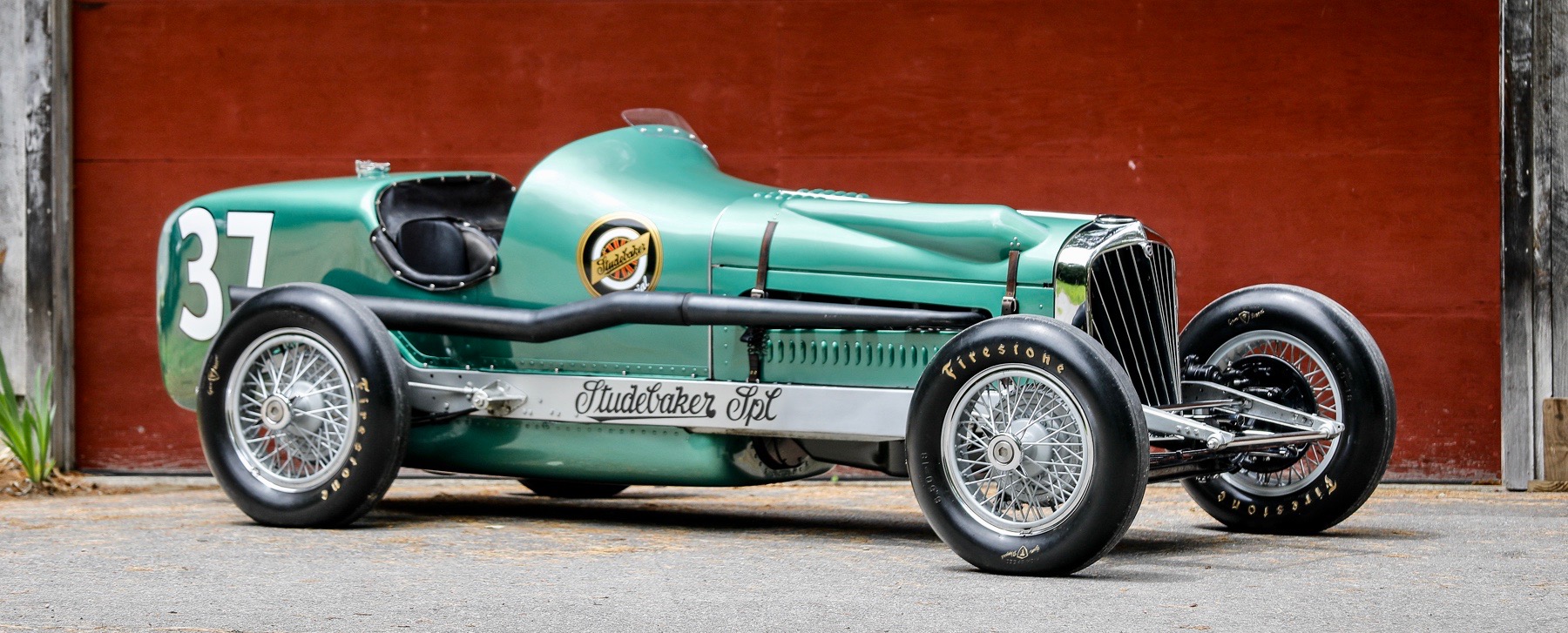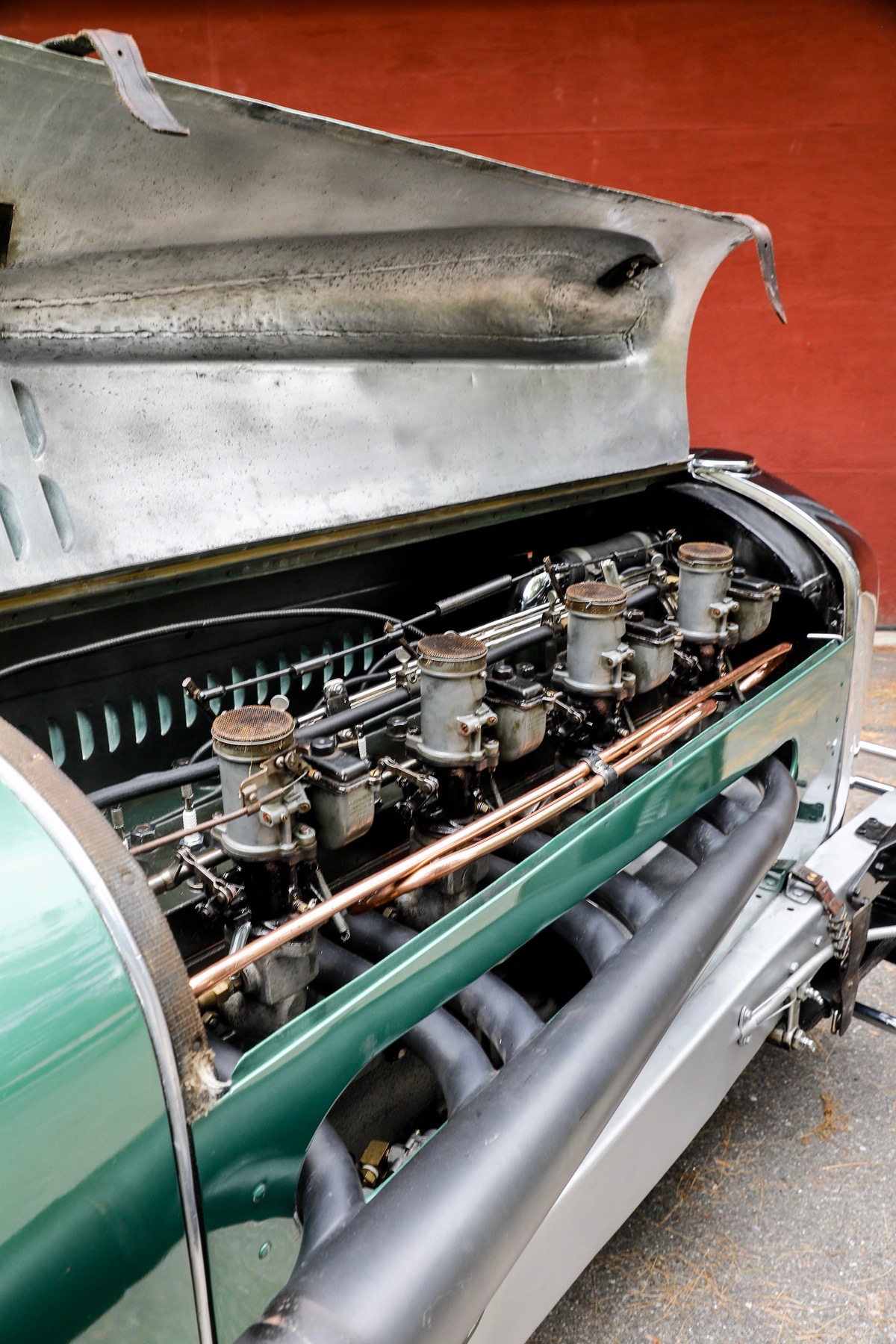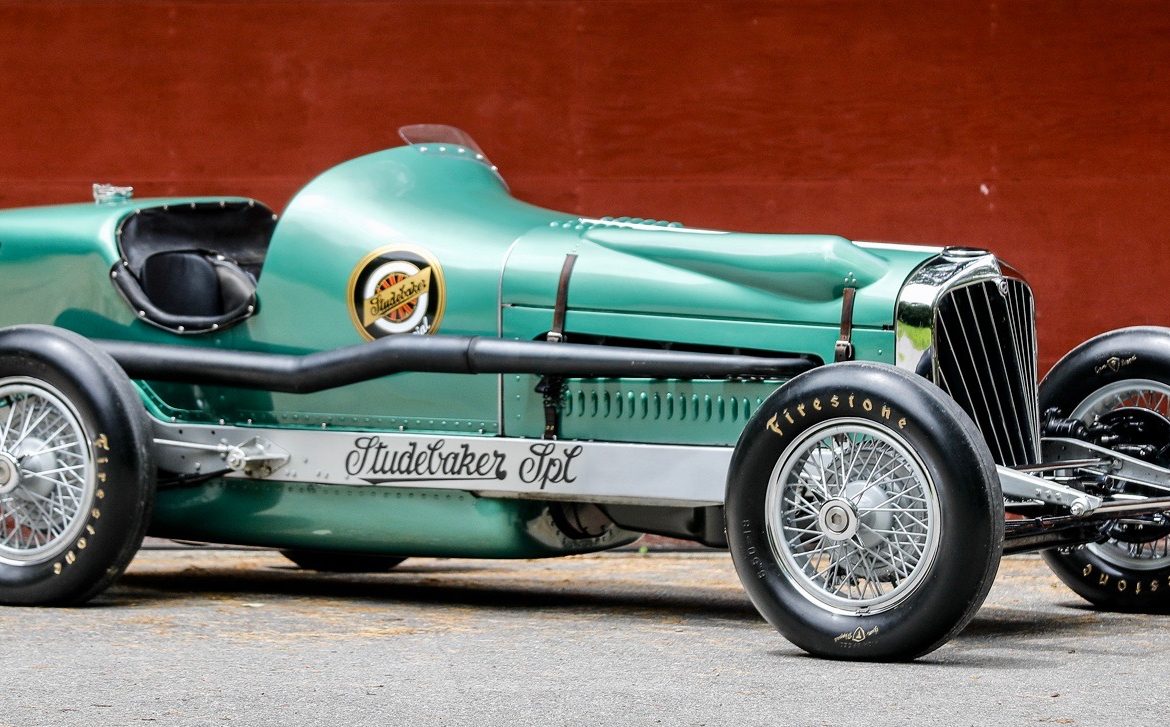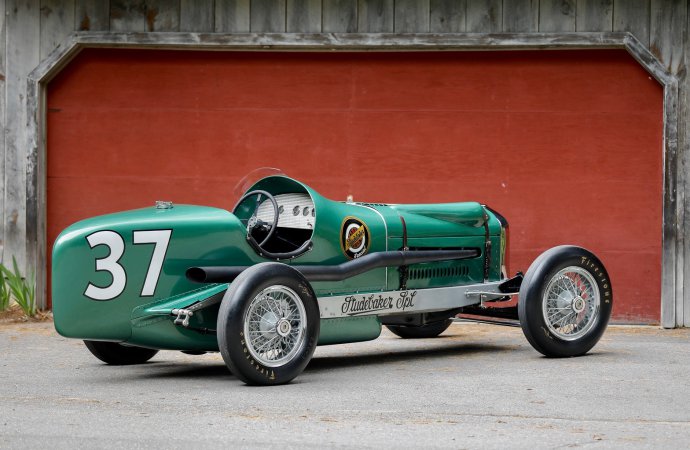1931 Hunt-Jenkins Special raced at Indy and set record at Pikes Peak, and now is heading to Gooding’s Pebble Beach auction
According to the Studebaker Drivers Club Forum website and subsequent media reports, the board of trustees of the Studebaker National Museum in South Bend, Indiana, has voted to bid on what is being called “the most important Studebaker vehicle sold in this country in the past 50 years.” The vehicle is the Hunt-Jenkins Special that raced in the Indianapolis 500 in 1931 and, just weeks later, set a record in winning the Pikes Peak Hill Climb.
The car, consigned from the Robert W. Valpey Collection, has been consigned to the Gooding & Company Pebble Beach auction scheduled for August 16-17. The auction house has set a pre-sale estimated value on the car of $500,000 to $750,000.
The museum board has committed “a significant amount of funds” toward the possible purchase and asking Studebaker Drivers Club members and others for pledges toward the effort to win the car at auction.
To participate, people are asked to email the museum’s executive director, Patrick Slebonick, at PSlebonick@studebakermuseum.org, to do so by August 14, and to include your name, address, telephone number and pledge amount. Then, if the museum is successful in its bidding on the car, you will be asked to make good on your pledge.

The Hunt-Jenkins Special was built in a partnership between George Hunt, Studebaker’s director of testing, and racer Ab Jenkins, who had set speed and endurance records at Bonneville in Studebaker cars.
Hunt ordered a racing chassis from Indy-based Rigling and Henning and had “Pops” Dreyer create aluminum bodywork and an ornamental grille cut down from a stock Studebaker President, and a pointed tail. At its proving grounds in South Bend, Studebaker fitted a high-compression 336cid straight-8 engine and various other Studebaker components, including brakes, axles, transmission and steering gear.
Tony Gulotta, a former member of the Packard Cable racing team, qualified the car 19th, but within 1 mph of the 1931 pole-sitter’s speed. Gulotta was battling for the lead late in the race when he was caught up in a crash on the 167th lap after the Hunt Special ran over oil and hit the wall.
The Studebaker was repaired and sent to Pikes Peake, where three-time winner Chuck Myers won the hill climb by 15 seconds, setting a course record of 17 minutes, 10.3 seconds.
Studebaker built four cars based on the Special for the 1932 race and they finished 3rd, 12th, 13th and 15th. The No. 37 car, owned by Jenkins, also raced, finishing 6th.
Studebaker displayed the No. 37 car at the 1933 New York auto show. It raced again at Indy in 1933, wearing No. 47 and finishing 12th.


Original engine still in place
After that race, Jenkins took the car back to his home in Utah, made occasional runs at Bonneville and then made it street legal and used it as a sports car through 1939 before selling it to W.J. Patterson. Patterson sold the car around 1960 to Ray Donald, who parked it in his back yard in Los Angeles.
The car was rescued in 1972 by Stanley B. Smith, former director of the Antique Automobile Club of America. Smith was a self-proclaimed “Studebaker nut” who had seen the car racing when he was a teenager. Smith had the car restored to its 1932 specification.
In 1988, Studebaker collector Robert Valpey purchased the car from Smith and used it in vintage races and at concours, including Pebble Beach in 2016. Valpey died earlier this year. He was 83.

